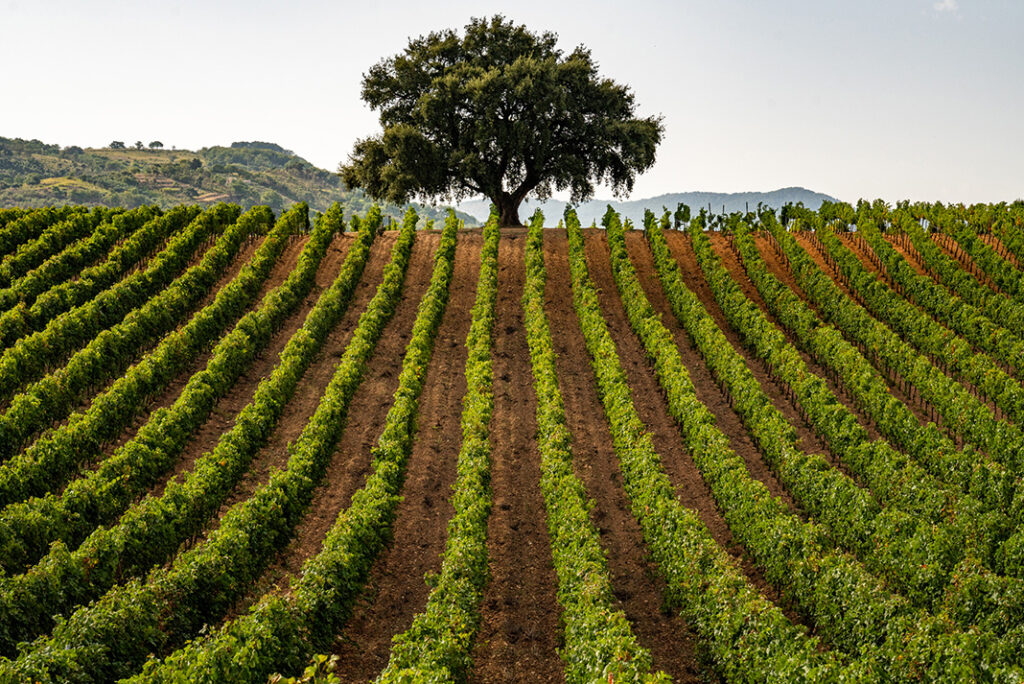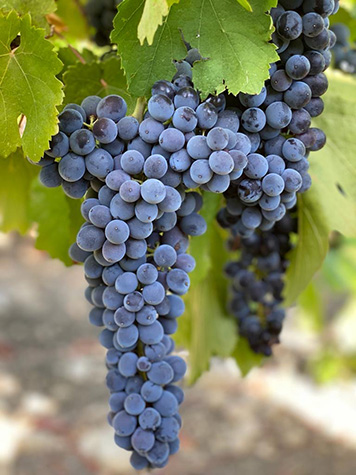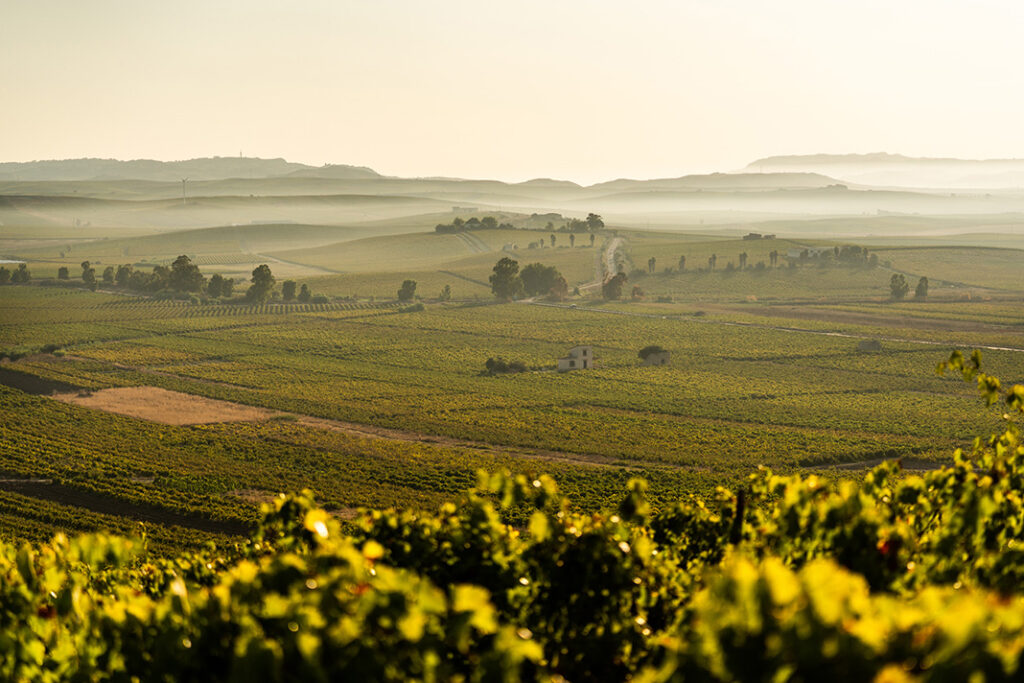
story by Stacy Slinkard
As the largest island in the Mediterranean and a central stop between Europe and Africa, Sicily has served as the cultural crossroads between Italy, Greece, Spain, France, Tunisia, and the Middle East for centuries. Each invading civilization left its indelible mark on the island, reflected tangibly in regional cuisine, traditions, and architecture. Given its temperate climate, abundant sunshine, marine influences, and incredibly varied soils, Sicily is a haven for classic Mediterranean agricultural pursuits—notably grapes, olives, almonds, citrus, and tomatoes.
Sicilians have a long history of viticulture, stretching back to the eighth century BC. However, it was only in 2011 that the Sicilia DOC was firmly established as a consortium of wine producers eager to get the word out about Sicily’s sophisticated and versatile indigenous varieties. Today the Sicilia DOC is home to over 250,000 acres of vineyards, 7,902 individual winegrowers, and 530 DOC wineries producing over 8 million cases of wine annually. There are 23 DOC designated regions and one DOCG roughly divided up by quadrants within the island. Factor in lower disease pressure and reduced threats from pests to the aforementioned climatic advantages and Sicily has a significant leg up on organic wine production: In fact, according to Jeff Porter, the U.S. ambassador for the Sicilia DOC, it’s estimated that 46% of Sicilian wines are certified organic.

Today’s Sicilian producers are keen to spotlight dozens of lesser-known grapes native to the island. While still planting and producing international varietals like Chardonnay, Cabernet Sauvignon, and Syrah, many of Sicily’s most notable winemakers are laser-focused on bringing off-the-grid wines like Frappato, Zibibbo, and Cataratto Antisa to the tables of international wine enthusiasts. Native grapes are mission critical to the Sicilian wine landscape because of their remarkable drought resistance and ability to maintain high acidity levels.
Sicily enjoys the longest harvest in Italy, often reaching 100 days from start to finish. Sparkling wine harvest typically starts at the end of July or early August, followed by the international grapes in September, with many of the indigenous varietals ushered into the cellar in October. With the intense sun and heat beating down on vines for months, it’s no surprise that sunburn can be a significant issue in the vineyard. Many vines are head trained with plenty of leaves left on the vine to protect the grapes from the constant sunlight.
Sicily’s incredible viticultural diversity stems from the varied microclimates, range of elevations, and unique strata of soil structures ranging from mineral-rich, dark volcanic soils near Mt. Etna to clay-dominated soils on the west side of the island and sandy soils near coastlines. True sense of place marks the wines of Sicily in profound ways: Its lovely white wines present incredibly fresh, mineral-driven profiles, and yet Grillo, one of Sicily’s best-known whites, will often range from refreshing and bright with lively acidity to presenting layers of complexity and structure depending on both regional influence and winemaking style. Catarratto Antisa is another Sicilian white wine gaining popularity thanks to its lighter body, bracing acidity, and ability to pair extraordinarily well with the local seafood.
Meanwhile, Nero d’Avola, perhaps Sicily’s most well-known red wine, is appreciated for its ability to convert unique microclimates into diverse aromatic profiles. Often carrying body and power as well as a bit of spice within its dense fruit character, Nero d’Avola occupies a remarkable platform on the international wine stage. And Frappato, one of Sicily’s rising red grapes, is gaining momentum for its fresh palate and easy drinkability; it’s often served slightly chilled during the heat of summer. Porter notes, “Current wine trends in Sicily reveal people drinking a little less but spending a little more, which translates into wineries making a little less wine but focusing on higher quality overall.”
Expressing the diverse terroir of the island, the wines of Sicily have deep roots and an even deeper history, shining a bright light on their unique place in the Mediterranean story. “There’s a joy in Sicilian wine that comes from sunshine and acidity,” says Porter. I couldn’t agree more.


